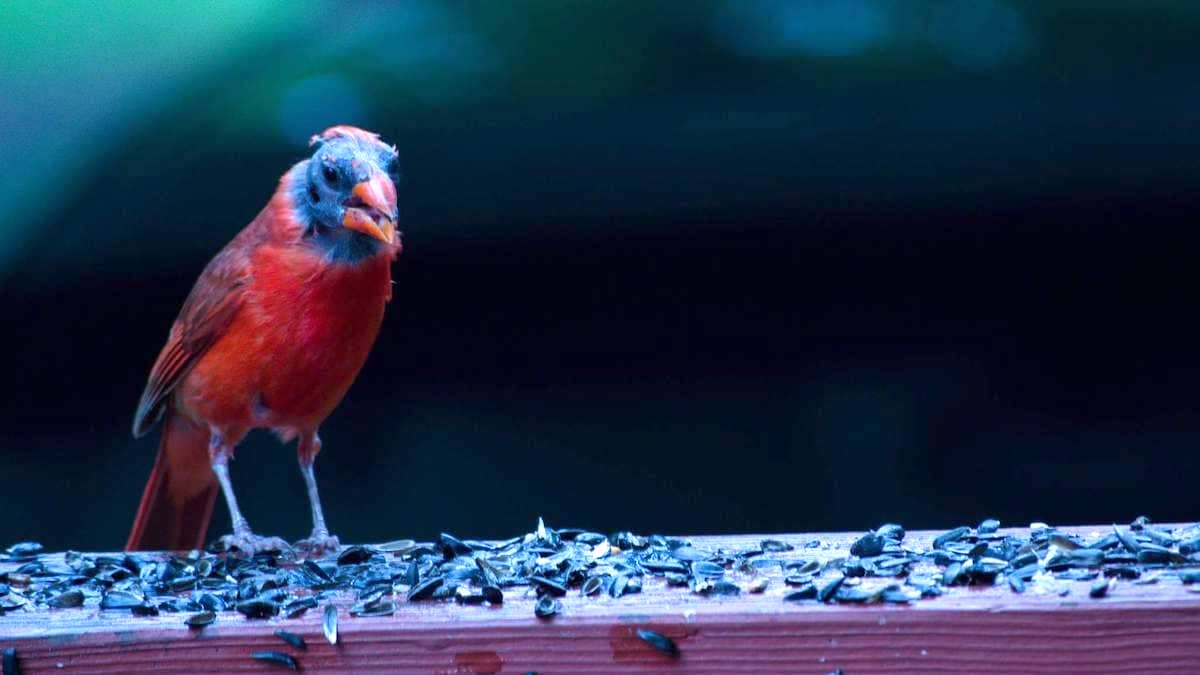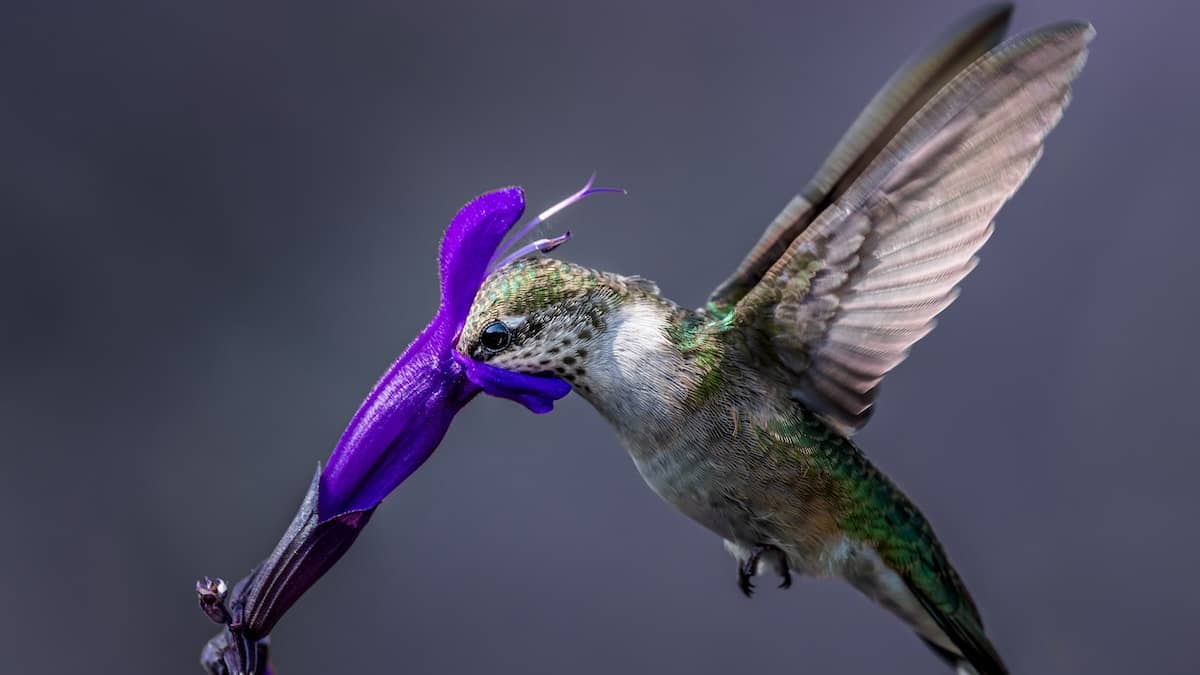Many nature lovers, or birdwatchers, may have noticed an unusual phenomenon, balding birds, Cardinals in particular. But just how common is this phenomenon, and what does it mean? Why are the Cardinals bald? Will their feathers grow back?
Although not common, some Cardinals can lose all of their head feathers. Although unusual, the sighting of bald Cardinals is normal. The balding look is caused by molting that, rather than occurring at intervals in different places on the bird, occurs in one specific area, thus giving the bird a strange bald appearance.
As otherworldly as the Cardinals may look with no feathers on their heads, this is not dangerous for the birds and can be noticed occurring from time to time in several Cardinals when they lose their feathers. Balding is not limited to Cardinals but can be more noticeable due to their bright red bodies contrasting with their black bald heads.
In this Guide:
When Will Bald Cardinals Most Likely Be Seen?
During warmer weather, birds often molt after their nesting season in the summer months. Being North American birds, Cardinals will most likely molt from July to October.
During these warmer months, the Cardinals will lose all their feathers, although never all at once.
How Do Cardinals Go Bald?
Molting is the main cause of baldness in Cardinals. Birds will generally lose feathers at intervals to avoid being without many feathers at once; however, they can sometimes lose all their feathers in one area.
This sudden loss of feathers, particularly those found on the head, leads to the sighting of what we know as “bald” Cardinals. The baldness is not permanent, and within a few weeks, the Cardinal will have its bright red plumage back again.
Can Illness Be A Cause Of Cardinal Baldness?
Although one cannot completely rule it out, baldness is rarely a sign of sickness, so do not worry if you see Cardinals with bald heads. It is a normal part of the molt, although unusual.
However, if you are ever uncertain, you can also be on the lookout for the following signs:
- Difficulty flying
- Difficulty eating
- Glazed swollen eyes
- Difficulty walking, lopsided unsteady walking
- Matted dirty feathers (not to be confused with new feathers coming out of molt)
Unfortunately, there is very little that one can do as wild birds should be left in as natural a setting as possible and illness is a normal part of a bird’s life cycle.
What To Do If You Notice A Sick Bird
Interference is not recommended, but by keeping your birdbath and bird feeder clean, you will give the birds a better chance of not passing the illness on to each other.
Constant fresh food will additionally assist with energy, and clean water will help with hydration and maintaining cleanliness.
If you see several unwell birds at once in an area, it is best to notify your local RSPCA or the local nature protection authority.
What Is Molting In Cardinals?
Molting is the loss of old feathers and the growth of new ones that all birds experience at least once a year. During molting season, birds will look a bit bedraggled as they lose their feathers, often pulling the old ones out themselves.
Why Do Cardinals Molt?
Molting is necessary for the removal of old and damaged feathers. Feathers are much like human nails and hair. Once grown out, they are no longer living tissue and cannot repair themselves. Much like a broken nail, damaged feathers are discarded, and new feathers grow in place.
Some birds will molt multiple times not only for feather health but for change of plumage, which can have importance for breeding and seasonal camouflage.
Larger species are less likely to molt annually, rather than losing their primary and secondary feathers in intervals over a period of a few years so as not to become flightless. Some water birds may indeed become flightless for a short period during their molt.
How Long Do Cardinals Molt For?
Cardinals will molt for up to 12 weeks, and it takes this amount of time for them to lose and regrow all of their feathers.
What Do Molting Cardinals Look Like?
Cardinals will look very much like most birds when molting, quite scruffy with the odd small bald spots, or in the case of bald Cardinals, with bald heads. New feathers will often look wrapped up as they begin to emerge in keratin sheaths.
Molting birds will spend a large part of their time preening as this helps the new feathers come out. The preening helps to remove the sheaths from the new feathers, and for a short period, it may appear like the bird has a small case of dandruff from the flakes of discarded sheaths.
How Can We Help Cardinals Molt?
For the most part, the Cardinals are just fine on their own. Molting in birds is a completely normal occurrence, and they will all molt at least once a year.
But it can be helpful to ensure that there is fresh water in your birdbath. This will help the Cardinals stay hydrated and offer them an easy way to bathe to get rid of old skin.
Molting requires a lot of energy so keep your birdfeeder well-stocked with high-protein grains. This will help the Cardinals to regrow their feathers and to keep them warm while their new feathers are still growing out.
Do Cardinals Change Color After Molting?
While the females remain a slight drabber version in a lighter brown color, males are known to be a bright, vibrant red.
Immediately after molting, this is not always the case, with the new feathers on the males having greyish tips. As time moves onward toward winter, these grey areas wear off, and the classic bright red hue of the Cardinal becomes predominant once more, just in time for mating season.
The red coloration is largely due to the diet of Cardinals, being carotenoid-rich foods like honeysuckle and berries. If you want to help your local Cardinals, plant indigenous plants in your garden.
Conclusion
While not wholly uncommon, a bald Cardinal’s sighting is unusual. The odd bald-pated appearance of some of these birds is not of concern and should rather be enjoyed and marveled at when you next see them in full plumage.
Keep a weather eye out during the summer months, and maybe you too will be able to view the unusual spectacle in person.




